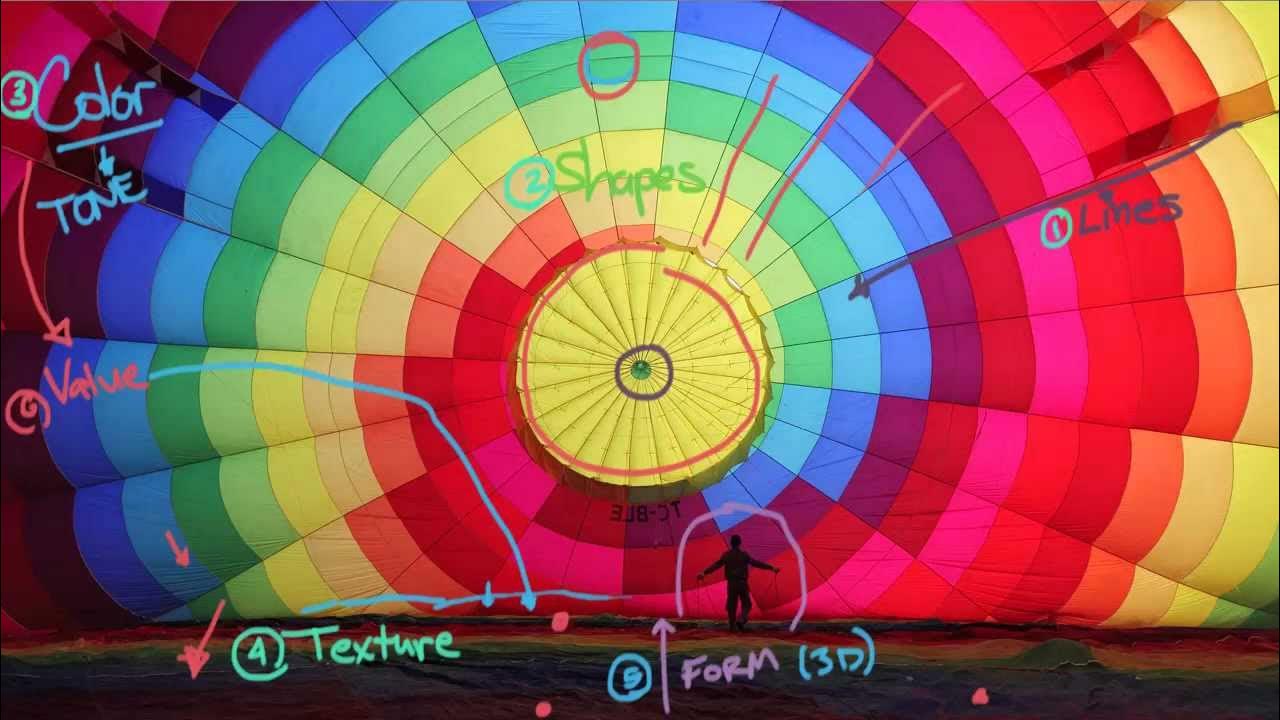1 2 Elemen Desain
Summary
TLDRThis video explains the fundamental design elements that form the backbone of visual compositions. It covers key aspects such as line, color, shape, size, space, direction, value, texture, proportion, and balance. These elements are essential for creating visually appealing and effective designs. The video emphasizes how designers can use these elements to create dynamic and engaging compositions, with examples showcasing their application in real-world design projects. The presentation encourages viewers to explore and apply these basics to enhance their design work.
Takeaways
- 😀 Design elements are the fundamental aspects that make up visual compositions, and they are essential for creating engaging designs.
- 😀 The 10 basic design elements are crucial for any visual designer to understand and apply when creating effective designs.
- 😀 Line: A key design element that creates space and draws attention to specific areas in a composition.
- 😀 Color: Colors have different meanings and emotional impacts, and their combinations can significantly affect the overall impression of a design.
- 😀 Shape: The boundaries of a design, whether geometric or freeform, help define the structure of a composition.
- 😀 Size: The size of design elements can create visual hierarchy and emphasize particular areas of the design.
- 😀 Space: Refers to the area around and between elements, which can be either positive (filled) or negative (empty).
- 😀 Direction: Refers to how the viewer's eye moves through the design, guided by lines, shapes, and other elements.
- 😀 Value: The contrast between light and dark in a design can create depth and dimension, making the composition more dynamic.
- 😀 Texture: The surface quality of elements, which can be perceived through touch or visually, adds realism and complexity to designs.
- 😀 Proportion: Refers to the relationship between the sizes of elements in a design, ensuring balance and harmony in the composition.
- 😀 Balance: Visual balance can be achieved through symmetry or asymmetry, ensuring a well-proportioned and aesthetically pleasing design.
Q & A
What are the basic design elements mentioned in the video?
-The video mentions 10 basic design elements: Line, Color, Shape, Size, Space, Direction, Value, Texture, Proportion, and Balance.
How do lines function in design?
-Lines are used to create space and direct attention to specific areas in a design. For example, magazines use lines to emphasize titles and side panels.
What is the significance of color in design?
-Color is a powerful design element as it conveys meaning and can evoke different emotions. For instance, pink is often associated with femininity, and combining colors can enhance the emotional impact of a design.
What is the role of shape in design?
-Shapes define space and can either be geometric (like triangles and circles) or organic. They help in building a composition that is visually engaging.
Why is size important in design?
-Size helps create visual hierarchy and emphasizes certain elements. A larger element in a design can attract more attention, while a smaller one may seem more subtle.
What does space mean in design?
-Space refers to the area around and between elements in a design. It can be positive (filled with elements) or negative (empty areas), and it influences the overall balance and clarity.
How does direction influence a design?
-Direction refers to how the viewer’s eye moves through the design, which can be guided by lines, shapes, or other elements. It can be horizontal, vertical, or diagonal, and it directs the viewer’s focus.
What is the concept of value in design?
-Value refers to the lightness or darkness of a color. It creates contrast and depth in a design, making it appear more dynamic and three-dimensional.
How is texture used in design?
-Texture refers to the surface quality that can either be tactile (felt by touch) or visual (seen). It adds depth and richness to a design, making it more engaging.
What is proportion, and why is it important in design?
-Proportion refers to the relationship in size between elements in a design. Proper proportion creates balance and harmony, making the design aesthetically pleasing.
What are the two types of balance discussed in the video?
-The video discusses two types of balance: symmetric balance, where elements are evenly distributed, and asymmetric balance, where elements of different sizes and shapes are used to create a sense of equilibrium.
Outlines

This section is available to paid users only. Please upgrade to access this part.
Upgrade NowMindmap

This section is available to paid users only. Please upgrade to access this part.
Upgrade NowKeywords

This section is available to paid users only. Please upgrade to access this part.
Upgrade NowHighlights

This section is available to paid users only. Please upgrade to access this part.
Upgrade NowTranscripts

This section is available to paid users only. Please upgrade to access this part.
Upgrade NowBrowse More Related Video

‘Shape’ Visual element of Graphic Design / Design theory Ep4/45 [Beginners guide to Graphic Design]

‘Space’ Visual element of Graphic Design / Design theory Ep6/45 [Beginners guide to Graphic Design]

What is Composition?

Desain Grafis Percetakan - Dasar Desain Grafis dan Nirmana kelas XI

9 Design Elements You Need To Know In Under 360 Seconds

Visual Literacy
5.0 / 5 (0 votes)